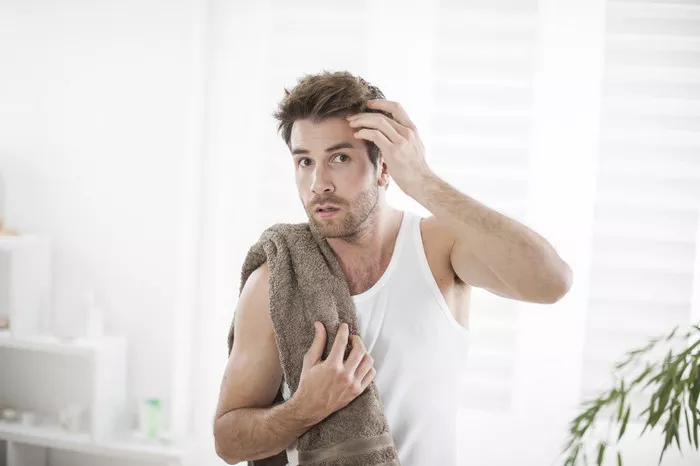I. Introduction to Male Hair Loss Treatments
Hair loss, particularly male pattern baldness, is a common concern affecting a significant portion of the male population. Fortunately, various treatments have been developed to address this issue and promote hair regrowth. Among the most widely recognized are Minoxidil, Finasteride, and low-level laser therapy (LLLT). In this article, we will explore these key treatments, examining their mechanisms, effectiveness, and considerations for individuals seeking to combat male hair loss.
1. Understanding Minoxidil
Mechanism of Action: Minoxidil is a topical solution that is applied directly to the scalp. It is believed to widen blood vessels, increase blood flow to hair follicles, and extend the growth phase of hair, promoting regrowth.
Effectiveness: Minoxidil has demonstrated effectiveness in promoting hair regrowth, especially in individuals with androgenetic alopecia (genetic hair loss). It is available over-the-counter in various forms, making it accessible for many users.
Application Considerations: Users typically apply Minoxidil solution or foam twice a day to the affected areas of the scalp. Consistency in application is essential for optimal results, and it may take several months before noticeable improvements occur.
2. Exploring Finasteride
Mechanism of Action: Finasteride is an oral medication that works by inhibiting the action of dihydrotestosterone (DHT), a hormone linked to hair loss. By reducing DHT levels, Finasteride aims to slow down hair loss and promote regrowth.
Effectiveness: Finasteride is particularly effective in treating male pattern baldness, with positive results often observed within a few months of regular use. It is available in tablet form and is typically prescribed by healthcare professionals.
Considerations for Use: While effective, Finasteride is not without considerations. It is generally recommended for men and is not approved for use by women, especially those who are pregnant, as it may pose risks to a developing male fetus.
3. Low-Level Laser Therapy (LLLT)
Mechanism of Action: LLLT involves the use of low-level lasers or light-emitting diodes (LEDs) to stimulate hair follicles. This process is thought to enhance cellular activity and promote hair regrowth.
Effectiveness: LLLT has shown promise in improving hair density and thickness. Devices such as laser caps or helmets are available for at-home use, and clinical studies have suggested their effectiveness in some cases.
Application Considerations: LLLT devices are typically used for several minutes a few times a week. The convenience of at-home use makes this therapy option appealing to individuals seeking non-invasive treatments for hair loss.
II. Comparing Treatments
1. Mechanism of Action
Minoxidil: Acts locally on the scalp, widening blood vessels and promoting increased blood flow.
Finasteride: Systemically inhibits the conversion of testosterone to DHT, addressing hormonal factors associated with hair loss.
LLLT: Stimulates hair follicles using low-level lasers or LEDs to enhance cellular activity.
2. Application and Administration
Minoxidil: Applied topically, available over-the-counter.
Finasteride: Taken orally in tablet form, typically prescribed by healthcare professionals.
LLLT: Administered through devices like laser caps or helmets, often used at home.
3. Effectiveness
Minoxidil: Effective in promoting hair regrowth, particularly in androgenetic alopecia.
Finasteride: Efficacious in treating male pattern baldness, with positive results observed within a few months.
LLLT: Shows promise in improving hair density and thickness, with at-home use convenience.
III. Considerations and FAQs
1. Can These Treatments Be Used Together?
Some individuals may use a combination of Minoxidil, Finasteride, and LLLT under the guidance of healthcare professionals. Combining treatments may offer a synergistic effect, but individual responses can vary.
2. Are These Treatments Safe for Long-Term Use?
Minoxidil and Finasteride are generally considered safe for long-term use with proper adherence to recommended dosages. LLLT devices are designed for long-term use, and potential side effects are minimal.
3. Is There a “One-Size-Fits-All” Solution for Hair Loss?
No, the effectiveness of treatments varies among individuals. Factors such as the cause of hair loss, genetics, and adherence to the treatment regimen can influence outcomes. A personalized approach is often necessary.
4. Can Women Use These Treatments?
Minoxidil is approved for use by women and is available in formulations specifically designed for female users. Finasteride is generally not recommended for women, especially those who are pregnant.
5. Do These Treatments Require a Prescription?
Minoxidil is available over-the-counter, while Finasteride requires a prescription. LLLT devices for at-home use can be purchased without a prescription.
6. Can Treatments Reverse Baldness Completely?
While these treatments can promote hair regrowth and slow down hair loss, they may not completely reverse baldness. Results vary, and consistency in use is essential for maintaining improvements.
7. What Side Effects Can Occur with These Treatments?
Common side effects may include scalp irritation (Minoxidil) and potential sexual side effects (Finasteride). Side effects with LLLT are generally minimal, but individual reactions can vary.
8. Are These Treatments Affordable?
Affordability can vary depending on the treatment and the individual’s budget. Minoxidil is generally more affordable, while Finasteride and LLLT devices may involve additional costs.
Conclusion: Tailoring Solutions to Individual Needs
In conclusion, the best treatment for male hair loss depends on various factors, including the underlying cause of hair loss, individual preferences, and considerations such as potential side effects. Minoxidil, Finasteride, and LLLT each offer unique mechanisms and advantages, and some individuals may find success with a combination approach. Consulting with a healthcare professional is crucial for personalized guidance, ensuring that the chosen treatment aligns with individual needs and goals. With consistent use and a tailored approach, individuals can take proactive steps in managing male hair loss and promoting regrowth.

